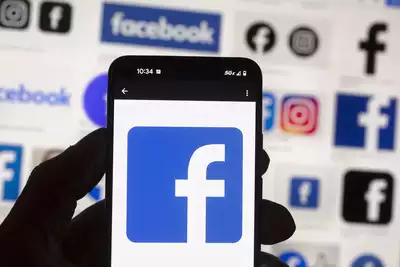Awesome you’re here! You know, navigating the ever-changing landscape of Facebook can feel like a roller coaster ride. With algorithms shifting and competition growing, scaling your presence organically can be a real challenge. But what if I told you there’s a way to supercharge your efforts without burning out? Okay, let’s dive in and explore how marketing automation can be your secret weapon for explosive Facebook growth.
Why Marketing Automation Is a Game-Changer for Facebook Growth
Before we get into the nitty-gritty, let’s understand why marketing automation is more than just a buzzword.
The Power of Automation in the Digital Age
In today’s fast-paced digital world, automation isn’t a luxury—it’s a necessity. According to Forrester Research, companies that excel at lead nurturing generate 50% more sales-ready leads at a 33% lower cost. Automation allows you to streamline repetitive tasks, freeing up time to focus on strategy and creativity.
By automating processes like scheduling posts, responding to comments, and analyzing data, you can maintain a consistent presence without the manual grind. This not only improves efficiency but also ensures that no opportunities slip through the cracks.
Leveraging Facebook’s Algorithm with Automation
Facebook’s algorithm prioritizes content that engages users. By automating certain processes, you can ensure consistent engagement, which in turn boosts your visibility. Hootsuite notes that timely, relevant content is key to staying in the algorithm’s good graces.
Automation tools help you post at optimal times, engage promptly with your audience, and tailor content to specific user segments. This strategic approach maximizes your reach and enhances the likelihood of your content appearing in users’ news feeds.

Setting the Foundation: Choosing the Right Automation Tools
Not all automation tools are created equal. Selecting the right one is crucial for effective implementation.
Top Automation Platforms for Facebook
- HubSpot Marketing Hub: An all-in-one platform that integrates with Facebook for seamless automation. HubSpot allows you to schedule posts, track engagement, and manage ads all in one place. Their robust analytics help you make data-driven decisions. Check out HubSpot’s Facebook Integration for more details.
- Buffer: Ideal for scheduling posts and analyzing performance, Buffer offers a user-friendly interface and affordable pricing. It provides insights into the best times to post and which content resonates most with your audience.
- Sprout Social: Offers advanced analytics and automation features, including social listening and competitor analysis. Sprout Social helps you understand industry trends and audience sentiments, enabling you to tailor your strategy accordingly.
- Agorapulse: Combines scheduling, monitoring, and reporting. It also offers CRM features, allowing you to manage customer relationships directly from the platform.
Evaluating Tools Based on Your Needs
When selecting an automation tool, consider the following factors:
- Scalability: Can the tool grow with your business?
- Features: Does it offer the functionalities you need, such as scheduling, analytics, or CRM?
- User Interface: Is it intuitive and easy to navigate?
- Cost: Does it fit within your budget?
G2 Crowd provides user reviews and comparisons to help you make an informed decision. Additionally, take advantage of free trials to test out different platforms before committing.
Crafting an Automated Content Strategy That Resonates
Automation isn’t just about scheduling posts; it’s about delivering the right content at the right time.
Leveraging Data for Personalized Content
Use analytics to understand your audience’s preferences, behaviors, and demographics. By segmenting your audience based on these insights, you can deliver personalized content that resonates on a deeper level. According to Content Marketing Institute, personalized content can increase engagement rates by up to 60%.
For example, if a segment of your audience is interested in eco-friendly products, tailor content that highlights your sustainable practices. Automation tools can help you set up workflows that deliver specific content to these user groups.
Automating Content Curation and Scheduling
Consistent posting is crucial for maintaining engagement. Tools like Feedly aggregate content from various sources, allowing you to curate relevant industry news or articles for your audience. By integrating Feedly with automation platforms like Zapier, you can automatically share curated content on your Facebook page.
Scheduling posts during peak engagement times maximizes visibility. Use insights from Facebook Insights or third-party tools to identify when your audience is most active. Automation ensures your posts go live at these optimal times, even when you’re not online.

Engaging Your Audience Through Automated Messaging
Timely responses can significantly boost user engagement.
Implementing Chatbots for Instant Communication
Chatbots can handle common queries, freeing up your team for more complex interactions. Chatfuel is a popular tool for creating Facebook Messenger bots without coding. These bots can:
- Provide instant answers to FAQs
- Guide users through product catalogs
- Collect user information for lead generation
According to Business Insider, chatbots can improve customer satisfaction by providing immediate support, increasing the likelihood of conversion.
Automating Follow-Ups and Lead Nurturing
Use automation to send personalized follow-ups based on user interactions. For instance, if someone comments on a product post, you can automatically send them a message with more information or a special offer.
Mailchimp integrates with Facebook to automate email campaigns triggered by specific actions, such as page likes or post engagements. This keeps your brand top-of-mind and moves prospects down the sales funnel.
Maximizing ROI with Automated Ad Campaigns
Advertising can be a significant investment. Automation helps you get the most bang for your buck.
Dynamic Ads and Retargeting
Dynamic ads automatically promote products to people who have expressed interest on your website or app. By integrating your product catalog with Facebook’s Dynamic Ads, you can show personalized ads to users based on their browsing behavior.
Retargeting ensures you re-engage users who have interacted with your brand but haven’t converted. Automation tools track user actions and serve relevant ads, increasing conversion rates. AdRoll specializes in retargeting across multiple channels, including Facebook.
Automated A/B Testing for Optimal Performance
Testing different ad creatives, headlines, and targeting options can be time-consuming. Tools like AdEspresso allow you to automate split testing, ensuring you allocate budget to the best-performing ads.
By analyzing performance metrics in real-time, you can adjust your campaigns on the fly. According to MarketingProfs, automated A/B testing can improve ad performance by up to 70%.
Analyzing and Optimizing with Automation
Continuous improvement is key to sustained growth.
Automated Reporting and Analytics
Manually compiling reports can be tedious and prone to errors. Set up automated reports to track key metrics like reach, engagement, click-through rates, and conversions. Google Data Studio integrates with Facebook to provide real-time dashboards that visualize your data.
These insights help you identify what’s working and what’s not, allowing you to adjust your strategy accordingly. Regularly reviewing these reports ensures you stay aligned with your goals.
Leveraging AI for Predictive Analytics
Artificial Intelligence can forecast trends and user behavior, giving you a competitive edge. IBM Watson offers predictive analytics tools that integrate with your Facebook marketing efforts.
By analyzing historical data, AI can predict:
- Optimal times to post
- Content topics that will engage your audience
- Likelihood of user conversion
Implementing predictive analytics helps you make proactive decisions rather than reactive ones, maximizing your ROI.
Ensuring Compliance and Security in Automation
Automation must be implemented responsibly.
Staying GDPR-compliant
If you’re dealing with European users, ensuring compliance with the General Data Protection Regulation (GDPR) is crucial. Automation tools should have features that allow users to opt-in or opt-out of communications easily.
EU GDPR Information Portal provides guidelines that are essential for marketers. Non-compliance can result in hefty fines and damage to your brand’s reputation.
Protecting User Data
Use secure tools and platforms to safeguard user information. Cybersecurity Ventures emphasizes the importance of data security in automation.
Implement measures like:
- Regularly updating software to patch vulnerabilities
- Using encryption for data storage and transfer
- Limiting access to sensitive information within your team
Building trust with your audience is essential, and securing their data is a significant part of that.

Case Studies: Brands That Nailed Facebook Automation
Learning from success stories can provide actionable insights.
Nike’s Personalized Marketing Automation
Nike used automation to deliver personalized content based on user preferences and behavior. By integrating their CRM with Facebook, they sent targeted ads and messages that resonated with individual users. This approach resulted in a 40% increase in engagement and a significant boost in sales.
Starbucks’ Chatbot Success
Starbucks implemented a chatbot on Facebook Messenger called “My Starbucks Barista,” allowing customers to order and pay for their drinks through the app. This streamlined customer experience led to higher order values and increased customer loyalty.
Sephora’s Automated Beauty Assistant
Sephora launched a Facebook Messenger bot that offers makeup tutorials, product reviews, and booking services for in-store makeovers. The bot not only improved customer engagement but also increased in-store traffic.
Best Practices for Seamless Automation Integration
Avoid common pitfalls by adhering to proven strategies.
Maintain a Human Touch
Automation shouldn’t make your brand feel robotic. Personalize interactions where possible. Use the recipient’s name in messages, and tailor content based on their interests. Forbes offers tips on maintaining authenticity.
Remember, people connect with people, not machines. Even in automated messages, maintain a conversational tone and encourage two-way communication.
Regularly Update and Optimize Automation Workflows
Set aside time to review and adjust your automated processes. Automation isn’t a set-it-and-forget-it solution. Monitor performance metrics and be ready to tweak your workflows to improve results.
Neil Patel emphasizes the importance of continuous optimization. Keep an eye on:
- Open and click-through rates for automated messages
- Engagement levels on scheduled posts
- Conversion rates from automated ad campaigns
By staying proactive, you ensure your automation efforts remain effective and aligned with your goals.
Test Before Full Implementation
Before rolling out new automated processes across your entire audience, test them on a smaller segment. This allows you to identify any issues or areas for improvement without affecting your entire user base.
Tools like Optimizely help you run experiments to determine the effectiveness of your automation strategies.
Integrating Automation with Other Marketing Channels
For maximum impact, your automation efforts on Facebook should complement other channels.
Cross-Channel Automation
Integrate your Facebook automation with email marketing, SMS, and other social media platforms. This creates a cohesive customer journey, enhancing user experience.
Platforms like ActiveCampaign offer cross-channel automation features, allowing you to coordinate messaging across different touchpoints.
Unified Customer Profiles
Create a single view of each customer by integrating data from various channels. This helps in delivering personalized experiences and improves targeting accuracy.
Salesforce offers tools for unifying customer data, enabling more effective automation.
Conclusion
By effectively leveraging marketing automation, you can unlock explosive growth on Facebook without overwhelming your team. Automation allows you to engage your audience consistently, optimize ad spend, and make data-driven decisions—all while freeing up time to focus on strategic initiatives. Additionally, by harnessing AI for Facebook marketing, you can gain insights into customer behavior that were previously difficult to analyze. This technology can help tailor your campaigns to specific audience segments, ensuring that your messaging resonates effectively. As a result, you’ll not only improve your return on investment but also foster stronger connections with your customers.
Remember, the key is to use automation thoughtfully, ensuring you maintain a human touch in all your interactions. It’s about enhancing your capabilities, not replacing the personal connections that make your brand unique.
Ready to take your Facebook marketing to the next level? Start by evaluating your needs, selecting the right tools, and crafting a strategy that aligns with your goals. With the right approach, marketing automation can be a game-changer for your Facebook growth.
FAQs
Can automation make my Facebook marketing efforts feel impersonal? Great question! While automation handles repetitive tasks, it’s essential to personalize your content and interactions. Use data to tailor messages, segment your audience, and maintain a conversational tone to keep your audience engaged. Automation should enhance your ability to connect, not hinder it.
Is marketing automation suitable for small businesses with limited budgets? Absolutely! Many automation tools offer scalable pricing plans suitable for small businesses. Starting with basic features like scheduling and basic analytics can provide significant time savings and improve efficiency without breaking the bank. As your business grows, you can expand your automation capabilities.
How do I measure the success of my automated Facebook marketing campaigns? Utilize analytics tools to track key performance indicators (KPIs) like engagement rates, click-through rates, conversions, and ROI. Automated reports can help you monitor these metrics in real-time, allowing for quick adjustments as needed. Setting clear goals at the outset makes it easier to measure success.

